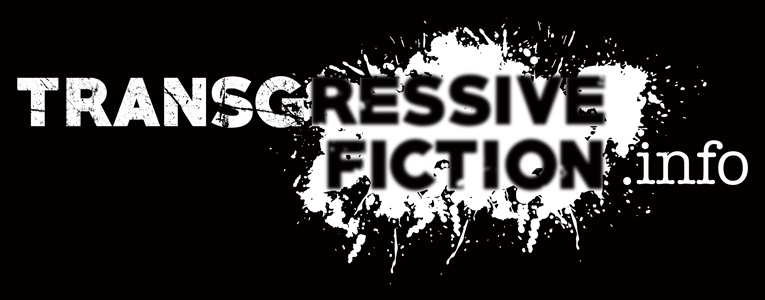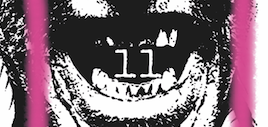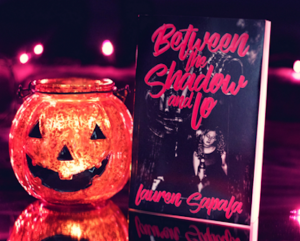Features
Keep checking back on our Features section as we’ll have interviews with some of your favorite authors, info on new releases, and all kinds of other cool shit to share with you.
An interview between Lauren Sapala and a fan in honour of West is San Francisco becoming our Book of the Month
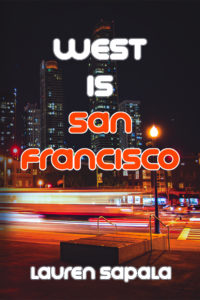
August: I love your word choice and details. It’s probably my favorite thing about your writing. Phrases like “botoxed scarecrow” had me laughing out loud. Your word choice and details color in the scenes effortlessly. Did you start with details first and then string together the scenes or did you start with the bare bones and plot, coloring in the scenes later?
Lauren: With all my books, I start by writing a VERY sloppy first draft and West Is San Francisco was no exception. I wrote down my memories of that time period of my life, pretty much just as I remembered them. I try not to pause too much while I’m actually writing and just grab the first words that come to mind. If I can’t grasp the exact words I want to use, I’ll settle for what’s immediately bubbling up in my brain and then insert brackets with a short note to myself to find a better word or phrase later. Sometimes, something like “botoxed scarecrow” (to describe a yuppie-type woman who is way too skinny and has had way too much plastic surgery) comes naturally during the first draft, but sometimes it doesn’t, and I have to go back over sentences again and again during revisions to carefully sculpt the descriptive phrases I want to use.
I do try to write fleshed-out scenes during the first draft stage, but I also often end up coloring scenes in later, adding detail, fleshing things out even more, etc. during subsequent drafts. I’m an intuitive writer, or what’s known as a “pantser” in the writing world, so I never have an outline of the plot to follow. I have no idea what the plot will be until I write it.
August: West Is San Francisco is even more surreal and dry-witted than Between the Shadow and Lo. What were your inspirations?
Lauren: I don’t know that I can point to any certain author or book that was the inspiration for West. Mainly, I just went through a series of intense experiences and I felt that I had to get them down on paper to process them within my own head. Every book I write is due to that same reason. Whether it’s autobiographical fiction (in the case of Between the Shadow and Lo and West Is San Francisco) or pure fiction, every book comes back to an important person in my life or set of experiences. It’s like I can’t understand my life until I turn it into story. West is no exception. I had to write the book to fully grasp why I chose to work for a sociopathic boss and how my dysfunctional personality is related to my addiction tendencies.
August: The flashback scene where Leah finally delves into memories of her mother’s, brother’s, and grandmother’s death was a long time coming. I was thrilled that Leah finally took us there with her. Since there was so much build up, was the flashback scene hard to write? Were you nervous? Did you have to rewrite it a few times to get it just right or anything like that?
Lauren: The flashback scene was INTENSE for me, since it’s mostly about my younger brother’s death from leukemia when he was six years old and I was eight. During the first draft, I had no problem writing it, but revisions were another story. It was brutal. And because that’s the nature of revisions, I had to go back over it again and again, and again. It was like a special kind of hellish exercise specifically designed to help me process that long-buried trauma. It worked though. Somehow, going over that scene so many times gave me the perspective and detachment I needed to finally move on from it.
And yeah, I think I rewrote the whole book at least seven times, that scene included.
August: Sal’s character was my favorite by far. He reminded me of John Malkovich in the movie Burn After Reading. As the book is autobiographical fiction, was Sal’s character based on a real person?
Lauren: Ha! “Based on a real person” doesn’t cover it. Every detail of Sal is recorded from real life. “Sal” was an extremely volatile, insanely exuberant huge Italian man who was a private detective himself and ran his own PI agency in San Francisco. I worked for him for almost three years. Sal is a case of “you can’t make this stuff up,” down to the actual dialogue used in the book. Sal was the easiest character for me to write, because I literally just wrote down things my old boss said and did and it formed itself into a story.
August: Speaking of autobiographical fiction, were you nervous about any negative reactions from people in real life that may have been in the book in some way? If there were negative reactions, how did you approach them?
Lauren: I think it’s impossible for any writer who is writing autobiographical fiction not to be nervous about negative reactions from the people in real life who are included in the book. In fact, when I released my first book, Between the Shadow and Lo, I was nauseous for a whole week as I imagined people reading it and freaking out. My approach to dealing with this was a bit odd maybe, but it worked. I contacted everyone who was in the book and who I thought might have a negative reaction and I sent them a copy myself. I figured I might as well pull the trigger on it and have it be my own doing rather than wait for them to find it on their own when I was least expecting it. And a funny thing happened: no one really had a negative reaction. In fact, the book reconciled me with a few people who I thought I had burned bridges with and that was pretty cool.
With West, I didn’t feel the need to track down any “characters” like I did with Lo. I think because I’m now somewhat desensitized to any negative reactions about my work. I have four books out and I get the whole spectrum of reactions to them quite frequently. Some people adore my work, and other people flat out hate it. I think every writer hits a point where you realize you just can’t invest any energy into the negative reactions. As a writer, you’ve got too much other shit to do.
August: My favorite part about West Is San Francisco is how meta it is. The story is self-aware. At times, it felt like a robot who had developed sentience. Was this intentional when you sat down to write it or did the story develop naturally like that?
Lauren: Well, it’s interesting, because I definitely didn’t try to do anything during the first draft. Like I said, I just sat down and wrote out everything I could remember and then worked with that. I wrote the book from 2009 to 2010 and then revised it many times up until about 2014, when I put it away in a drawer. Then I pulled it out again in 2017 with the idea of revising it one more time. As I read through it I finally saw the main pattern. All at once it dawned on me, “Whoa! This book is about death!” And not death as we usually think of it in our culture—something negative and tragic and fucked up—but death as transformation, and possibly even an ally. That’s when I was able to go back through and tease out the theme by adding more archetypes and symbols and specific language. I added the foreword to make it very clear to the reader, “Hey, here comes DEATH.” I added in descriptions of skulls and shrouds in unlikely places, and focused heavily on the storyline of my brother’s death and the death of one of the private detectives at the agency, and then the final scene revolves around the idea of suicide and how killing yourself (symbolically) might actually be a good thing. I wanted the reader to feel like I was clubbing them over the head with death at every turn. That was intentional. But the initial emergence of the death theme? Not at all. It was a total surprise to me.
Same thing with the meta element you noticed: the fact that Leah is obviously in a story, writing a story about her story, with people surrounding her who also have appeared to walk out of a story and are participating with her in her story, as it happens. I didn’t try to do that. It happened naturally. I just noticed it later during revisions and worked to bring it out even more.
August: Do you have any advice for young writers of transgressive autobiographical fiction? (This question is entirely self-serving).
Lauren: Write it. Write it no matter how scared you get. You’re going to be FULL of self-doubt. You’re going to seriously question yourself and what you’re doing and you’re going to read back over your writing and think it’s shit and that you are a piece of shit and that everyone is better than you. It’s not true. It’s just bullshit lies coming from self-deprecating thought loops in your head. What’s real is that you’re going to be dead someday and no one will really care what you did with your life so you might as well do something that means something to you and that is FUN. So if writing transgressive fiction is something that makes you feel passionate and curious and alive and challenged, DO IT.
And the more you do it, the easier it will get, on all fronts.
West Is San Francisco is the second installment in Lauren Sapala’s West Coast Trilogy and the sequel to Between the Shadow and Lo, an addiction memoir in the gritty and hilarious transgressive fiction tradition of Chuck Palahniuk, Charles Bukowski, and Joshua Mohr.
TransgressiveFiction.info—a Hot Spot for Readers (and Writers) on the Edge
By Greg Levin
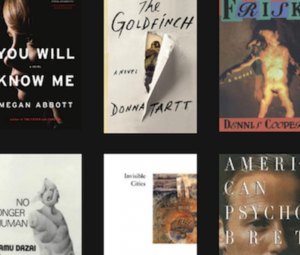
For those of you who are unfamiliar with transgressive fiction, you’re probably more familiar than you think. I’m betting you’ve read or heard of many transgressive novels, or at least know of the movies based on the masterpieces. Does Fight Club ring a bell? How about Trainspotting? Or American Psycho? Or The Exit Man? (Okay, so maybe you haven’t heard of that last one, but you can’t blame a guy for trying to stand on the shoulders of giants.)
For those of you who like your literary terms more clearly defined, I’ve got you covered … well, Wikipedia does anyway:
Transgressive fiction is a genre of literature that features characters who feel confined by the norms and expectations of society, and who break free of those confines in unusual or illicit ways. Because they are rebelling against the basic norms of society, protagonists of transgressive fiction may seem mentally ill, anti-social or nihilistic.
Yeah baby! Who doesn’t love rebellious and unstable sociopaths.
Despite its key themes and characteristics being so appealing to mass audiences, transgressive fiction is considered a fringe genre—if considered a genre at all. TransgressiveFiction.info is out to change that. There are too many formulaic thrillers and mysteries lingering on bestseller lists these days. TF.info aims to shine the spotlight on the most original and daring books out there—by authors living and dead (though rarely both). Some of the featured authors are famous, others soon-to-be so.
Q & A with Max Kindred
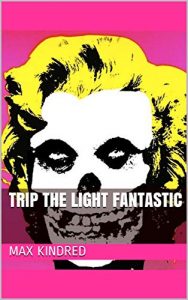
Q: Trip the Light Fantastic takes place in “the Valley,” a place most people know as part of the Los Angeles area and packed with celebrities and wannabe celebrities, and everything that comes along with celebrity culture. How did you pick this location as the setting for the book?
A: Initially, Raymond Chandler and James Ellroy novels made me fall in love with Los Angeles as a literary setting. Ellis’s ‘Less Than Zero’ really depicted a somber painting in my mind, and paved way to the dark side of an otherwise bright place. In some of my favorite L.A. films, I felt like the Valley was always there, but never used as the MacGuffin of the story, or used to influence the outcomes of its characters. I’m talking stories like Body Double, L.A. Confidential, Drive, Memento, Mulholland Drive, Pulp Fiction—there’s a gothic gusto at the underbelly of these landscapes, an accumulative sense of dread, loss, defeat, failure, all of the above. And I figured there’s been thousands of no names to walk into the land of celebrity without a job, a name, an identity, hoping for the best of things to come, but ultimately leaving as the nobody they showed up as. I mean, how tragic is the thought of that? We hear so much about Hollywood success stories, but what about the failures, the tragedies? My goal was to illustrate the growing shadow of the American Dream, specifically through the bloodline of popularity, one-upmanship, and the opioid epidemic.
Q: One of the things I adored about Trip the Light Fantastic was how off-kilter you manage to keep the reader. I started out feeling like the story was rooted firmly in this reality and then swung wildly back and forth trying to decide if we were trapped in some sort of Hell world or Purgatory with the characters. Did you consciously design the narrative to keep the reader feeling so delightfully disoriented or did that naturally unfold as you were writing the story?
A: Thank you for the adoration. I naturally let the story of each narration play out, focusing on the wants and themes of each character. Vladimir’s theme was jealousy, Kourtney’s was rebellion, Deena’s was curiosity, and Troy’s was corruption. But, similar to Citizen Kane or Pulp Fiction, the reader should be able to mix and match all parts of the story and hopefully still be satisfied as a whole. In Trip the Light’s case, from a bird’s eye view, the narrative spun into a carousel along the downward spiral, much like a Twilight Zone episode. But these are four long short stories sewn together, similar to the structure of Faulkner’s ‘The Sound and the Fury’, and as a result, the reader learns there is no beginning or end, and that the novel is a glimpse into four lives we hope to never end up with. It’s something like an acid trip, four times over, or maybe even the images that flicker behind our eyelids the moments before we die. It’s open to interpretation. I also wanted to portray everyday people—family, friends, coworkers, strangers. We all know what it’s like being stuck in a room with a talking head—as soon as these people open their mouth, they’re introducing us into a bit of their psyche, and sometimes to our dismay. And as we all know, if we’re surrounded by the wrong people, the wrong influences, life can be a death trap that kills you slowly.
Q: One of my favorite lines in the book is:
“…The blood simple fact of it is that I can have whatever I want, for better or worse. This place allows us to have whatever we want, and it’ll get better and better in time.”
This felt so sinister to me. It made me think of the darkest side of human desire unleashed without any sort of system of checks and balances to put on the brakes. Can you talk a little more about the meaning behind these lines?
A: I’m glad you caught this line, and sort of ashamed, the same sort of shame I felt after writing any bit of monologue or dialogue to Troy Davis or Jake Strahm’s character. But troubling characters like these help establish the soul of a transgressive story—shame tries to stop us, but the blatant truths of people will always prevail in getting the point across. In this certain scene, Jake Strahm knows he has Deena where he wants her, a predator stalking his paralyzed prey, knowing she’s defenseless, and he exhibits the overconfidence of any classic trickster. We see where Deena’s curiosity and naivety gets her, and we learn just how sinister Jake Strahm is, and eventually what the source of destruction is, and who it’s coming from. As for the direct meaning or symbolism in the line, I wanted to paint the vivid picture of how men are treating women these days, and showing that, in light of the Me Too Movement, that abused women aren’t cop outs, they’re victims of cruel men. And so it was instinctive to make the abusive man a villain in the novel. Men, especially the jealous/insecure ones, want the power and complete dominion over a woman, especially a fragile, beautiful one. For the sake of satire, for the sake of hoping the world betters itself, the stark contrast of a weak man’s violation of a drugged woman demonstrates the ultimate abuse of power. As much as this novel seems to express violence toward women, it’s actually a reality check for men. Though women readers may feel uncomfortable, my true ambition was to scare abusive men straight by exploiting them. I felt ashamed writing these scenes for the same reason male readers should feel ashamed reading them. I wanted to give my male readers ‘A Clockwork Orange’ treatment—open their eyes so wide in hopes that their abuse turns to respect.
“…But I suppose this is the reason a woman pursues or dates a man—to decipher the moment of his life that tortures him.”
For me, as a woman, this is so spot on and so true it gave me chills. How did you get such great insight into the female mind?
A: Aside from experiencing love and heartbreak for myself, I would say writing the opposite gender is a bit of reverse psychology. If we know that a woman in a relationship wishes her man to be her rock, her foundation, her support system, then we must know the repercussions if the man fails to be these things. We must be able to admit that if a woman is incomplete, unhappy, or enduring pain, that she is devoid of her rock, her man. And while I’m no expert, it’s still relevant that a man’s inner pain can begin to affect his woman and the lack of stability she feels in the relationship. I’m sure there’s varying opinions on this topic, but I’ve always been enamored with the thought that the root cause of an unhappy woman in a relationship is the secret at the center of her man, that one secret every man has the hardest time coming to terms with, something that tortures him, the one thing that holds him back from being his true self—the secret that infects the rock. It’s totally subconscious, and it’s totally Freud. But sadly, most men don’t ever realize this about themselves, and don’t reveal their secret to a soul. Some men never learn to humble themselves for the sake of their woman. In the case of Kourtney and Deena, it’s apparent they are devoid of their rock. Kourtney is too damaged, too far gone to keep a Valley man, where Deena is too good for any of them, even though she’s mistakenly fixated on Troy. Again, stark contrasts and far extremes help satire get the point across.
A: Even though readers of this novel may think I’m halfway to hell for writing it, my inspirations were quite biblical. My fear while reading about Sodom and Gomorrah inspired the dark imagery of the Valley, perhaps a loose take on the valley of the shadow of death, and Lot’s wife turning to a pillar of salt for looking back at her old life had a lasting impression on me. We can all look in the rearview mirror and feel bad for ourselves, regret things, and get depressed, but I felt for my characters, and for myself, this novel was about discovering reality first, and our purpose in life second. I felt and still feel that to find our purpose in life, we must accept reality and never look back. Sometimes accepting reality can be the most painful experience in life, to know your actions have lead to permanent consequence. So along with my characters, I’ve learned that our memory is here to guide us, not to obstruct our direction in life. But sometimes, like several of my characters, there’s the point of no return after the submission to sin.
Q: As I read Trip the Light Fantastic, I was reminded of Less Than Zero and even more strongly of Glamorama. I’m assuming you’re a huge BEE fan, am I right on that? How much influence has Bret Easton Ellis had on your work?
A: You’re more than right on that! Knowing how young Bret Easton Ellis was when he wrote ‘Less Than Zero’ encouraged me to write the novel. I was apprehensive at first, afraid I wasn’t qualified enough to write a novel, perhaps too young. And maybe I’ll never be qualified enough, but Ellis taught me talent comes in many stories, styles, and ages. I was 22 when I started Trip the Light Fantastic, and now I’m 25 revealing it to the world to read, hoping not to get lambasted for writing uncut transgressive fiction. But how Ellis has influenced me most is in his approach to writing—he’s not at all concerned with his identity as a writer, but more concerned with the work itself. This might explain why he hasn’t published a novel since 2010 but yet is always working on one. To write for the pure joy of it, to create your own support system, your own rock, is when you know your passion has led to your purpose in life. And seeing Ellis write for the labor of it and not the accolade, it makes me feel invincible as an artist, I feel I know where I’m meant to be instead of where a publisher thinks I should be. If one person has read my novel and was entertained by it, and maybe even enjoyed it or will remember it, then I’ve already won.
A: I’m reading everyone and everything at the moment! I’ve found some self-published gems, a lot of writers who are up-and-comers in my opinion, but the list is too long to name. It’s the golden age of freedom of speech right now, so being a self-published author on Amazon, social media, or the big invention called the Internet is only going to get more competitive. But this is great for readers, you can weed out what you may not like if you have an eye for good writing. But for readers and writers, self-publishing is good to create a well-rounded literary community. And it’s been amazing to see indie presses and self-published writers finally get their big break. Seeing Hugh Howey, Andy Weir, and R.D. Ronald make a name for themselves has been exhilarating, and the same can go for transgressive names like Guy Portman and yourself, Lauren Sapala! One indie press I’m obsessed with right now, especially if you’re looking for transgressive, abstract titles is Two Dollar Radio printing out of Columbus, Ohio. Editor Eric Obenauf was influenced by Barney Rosset and the old Grove Press (the publisher who gave birth to Transgressive Fiction) on providing unique titles from a more boutique style. And the one standout author who has completely blown my mind has been Gillian Flynn, who is also featured on Transgressivefiction.info. She may get the popular vote, but she deserve it.
A: I have many books planned for the future, and I’m also not ashamed to admit I’m entirely new to this whole writer gig, so my platform is limited right now, outside of @kindred_max and “Trip the Light Fantastic” on Amazon. But hopefully I will have a website up soon once I get some more work out there. I’m excited for what’s to come, and I’m persistent in producing the type of novels I can never find in bookstores. I’m the stereotypical experimental artist, so predicting my next book would be an indictment to myself. But after reading Trip the Light a countless number of times, it’s entirely too avant-garde for today’s standards, so I’ll be looking to balance my desires with commercial demand. For how much an artist loathes the term ‘commercial’ or ‘mainstream’, my number one influences have found a way to hit the big ticket without compromising their artistic process—James Ellroy, Philip K. Dick, Alfred Hitchcock, Christopher Nolan, etc.So in a nutshell, I’ll be looking to incorporate transgressive elements into the classic thriller genre, perhaps the way Jim Thompson, Gillian Flynn or Megan Abbott have done. Finding a balance in style is the hardest part, but if the tortured artist wants the closest thing to perfection, he’ll never quit. “Trip the Light Fantastic” was only the beginning for me, it was my twisted way of saying I’m not afraid to be myself. And if I can inspire others to write without fear, then I’ll be doing this forever.
Q & A with Greg Levin
By Guy Portman
Transgressive author Greg Levin’s four books include the well-received In Wolves’Clothing.
Me: Hello Greg, I hope your writing is going well. I have a question for you. Is there a book out there that made a difference to you on your writing journey?
Greg: This probably won’t shock you, but it’s Fight Club, which I read while living in Spain in the early 2000s—several years after the book was published and the movie made.
Me: Fight Club. It’s a good book and film. How did Fight Club influence you and your writing?
Greg: It’s the novel that really got me into contemporary transgressive fiction. And it’s not even my favorite book by Chuck Palahniuk. (Survivor is.) But Fight Club is the one that awoke in me a fresh new way of writing—dangerous prose with a minimalist bent. Writing that’s dark, startling and irreverent, but also lean, hilarious and human.
Me: I see, the book obviously had a profound effect on you. Tell us more?
Greg: You can imagine my elation—and my terror—when, after having been a huge fan of Palahniuk’s for more than a decade, I was one of about a dozen writers selected by him to participate in his inaugural “Writing Wrong” workshop in Portland in 2017. Every Monday for ten weeks I got to sit in a room with Chuck, read sections of In Wolves’ Clothing (a work in progress at the time), and have him tell me everything I had to fix to make the book as good as I had deluded myself into thinking it already was. The whole experience was extremely rewarding, and humbling. Most importantly, it gave me the ability to name-drop Chuck Palahniuk during interviews for the rest of my life.
Me: Ha ha, and why not.
Greg: Seriously though, I’ll always treasure not only getting to meet the author of the novel(s) that changed my life, but also learning how to take his punches—and even duck a few.
Thank you for your time Greg.
CALL FOR SUBMISSIONS – Transgressive Fiction
WEIRD MASK
ISSUE 11
Release date: January 1st, 2019
Dirty Realism / Transgressive Fiction
Think Bukowski, William Burroughs, Hunter S. Thompson, Chuck Palahniuk, Irvine Welch, Bret Easton Ellis, ETC.
1,ooo to 2,500 words
Send submissions to weirdmaskzine at gmail dot com
CLOSES DECEMBER 1ST!!!!
This is Not An Exit
By Max Kindred
In the Shadows With Lo
Taking with Lauren Sapala
Written by: J.L.Foster October 22, 2018
If you have been looking for a book to help you trudge into winter, look no further. I have found what you’re looking for. I snuggled up with Between the Shadow and Lo this month; an unapologetic tell all, about the decline of an alcoholic girl and the hilarity of her infelicities. I was not only thrilled to read every depraved minute of Lo’s story, but also moved by the immense attachment I felt to her struggle and her horrible self-induced misfortunes. This book is raw and gritty, it is funny and utterly transgressive. It makes the ugliest of things sound so astonishingly beautiful, at times I began to wonder if those things were really ever ugly at all.
So, naturally I felt the need to bother the author, Lauren Sapala about my absolute adoration and express my hopes for more. I stomped my feet and raved to her about how much I adored every moment I spent with Lo. Despite my lack of social skills, Lauren was not only grateful for my praise, but she even agreed to an interview:
J.L.Foster: When you first began writing [Between the Shadow and Lo], was your immediate goal to make it a very truthful and gritty memoir? Did you ever plan to fictionalize any of it for any reason?
Lauren Sapala: When I first began writing the book, I hadn’t written anything in over seven years. I had a professor in college who told me, basically, that my writing sucked and I should find something else to do with my life. So, I stopped writing, completely. And then I went off the rails for a little while and spent the next seven years drunk. When I came out of that black period and got sober, I started writing again and Between the Shadow and Lo is the book I wrote, all about that dark time.
I didn’t really plan anything. I just sat down once a week for one hour and wrote down everything that came pouring out of me. It seemed to be memoir, obviously, at first, but as time went on I wondered about that. It took me 11 years to revise the manuscript and during that time I began to see that the work would do much better as fiction, for a variety of reasons.
JLF: The more disgusting and hilarious scenes are the stars of your reviews, and among readers. How did you make such gross scenes not only hilarious, but quite beautifully written?
LS: Well, as any writer can tell you, novels are not really “written,” they’re “rewritten.” I rewrote Lo many times. The epic dump scene and the pop-up-period did not start out as beautifully written. I can definitely say that. During the first draft stage with the book I just wrote what actually happened in both scenes and then later I molded that raw material to make it work as an art piece. To draw the beauty out of both scenes I concentrated on working with the images and mental echoes that showed up in my mind as I was writing the rough draft. So, with the pop-up-period scene, for instance, at one point I described looking down at the bed the morning after a one-night and seeing the bed covered in blood and knowing the guy I’d hooked up with was about to come back upstairs and find his bed and all that blood. For some reason, that made me think of Charles Manson (who I’ve been totally obsessed with for years) and the descriptions I’ve read of the Tate-LaBianca murder crime scenes. So, I reworked the rough draft text to say:
The blood wasn’t just in patches, it was in great mad splashes, like something had been killed there and had tried to get away the entire time it was being killed.
And then I polished the image of blood clots on the sheets until it was transformed into:
The clots looked like nightmare shellfish, beached and dying. I thought I saw little heartbeats in each one.
I find that doing that type of imagery work and polishing can only be done through multiple revisions.
JLF: Your site and other books are packed with some great advice and guidance to help fellow writers, but do you plan on releasing any more fiction of the Transgressive kind?
LS: I do. It’s kind of a weird thing because I really don’t “plan” for a book to be Transgressive Fiction while I’m writing it. It either comes out that way or it doesn’t. I’m releasing the sequel to Between the Shadow and Lo this November and while it contains transgressive elements, I wouldn’t entirely call it pure Transgressive Fiction. However, I am currently working on a novel about a Vietnam War vet who also happens to be a necrophiliac and his teenage metalhead son in the 1980’s that IS pure fiction AND purely transgressive. That book will be out in 2020.
JLF: Do you think you have any advantages or disadvantages being a female writer in the Transgressive Fiction genre?
LS: If you had asked me this question in 2010 I would have said that I had a solid disadvantage. I tried like hell to find an agent who would represent Between the Shadow and Lo and met with absolutely no success. There are barely any agents out there to begin with who are even interested in representing Transgressive Fiction, but I managed to find, like, two who were open to taking it on, and again, this was back in 2010, so times were different even though not that much time has passed since then. Anyway, of the two who were interested in TF, one guy said he only wanted to look at male authors. He listed Chuck Palahniuk, Bret Easton Ellis, and Cormac McCarthy as his big three favorites. He said he realized it was a very male list but that was all he wanted. I was crushed. Because, first of all, I love Chuck Palahniuk, Bret Easton Ellis and Cormac McCarthy, and second, I felt like I had been looking for a needle in a haystack and when I finally found that needle—against all odds—it got snatched away from me and I was told I couldn’t have the needle because I was a woman. It was totally crazy-making.
Now, it’s a different story. And like I said, I know 2010 wasn’t all that long ago, but in terms of the huge changes we’ve seen in the past few years, it feels like A LOT has changed across the board in the writing and publishing industry. When I decided to go indie and self-published Between the Shadow and Lo I was shocked how many men contacted me after reading the book to say they loved it and really connected with it. And most of the stellar reviews I got were from men too, so it kind of blew my mind. I had always been worried that maybe men wouldn’t be interested in the story because, even though it is gritty and raw and brutal, it also talks about things like a woman going through violent episodes of diarrhea and annihilating some random one-night stand’s bedsheets when she unexpectedly gets her period. I had no idea how guys would take that. It was a real relief when male readers contacted me and told me they thought those episodes in the book were hilarious.
JLF: You mention your struggles with finding an agent for Lo, do you think The current market would have been warmer to Lo or any future creations? Or are you married to the self pub world now?
LS: You know, it might be warmer, but for me personally…no, I would never go back to trying to find an agent. Once I started self-publishing and really getting into the business side of writing, and then also working with other writers who were traditionally published (I work as a writing coach as my side hustle), it just became so clear that the traditional publishing route is not for me. I want to be in charge of my own marketing, for one thing, and I want total artistic control for another. The cover artwork for Lo, for example, is weird and some people don’t like it because it’s garish and trashy. But I wanted it to be garish and trashy. I wanted it to have a 1980’s-hooker type of feel, and I just don’t think there’s any way I could finagle that kind of thing with a traditional publisher.
Also, Amazon pays 70% royalties. Traditional publishers pay 10-15%. That’s a big difference by anyone’s standards.
JLF: You have this unique voice that doesn’t have an obvious influence from one specific author. I know you mentioned a few of your literary heroes earlier, but did you have any specific influences while working on Lo?
LS: Definitely. Lo is the first installment of a trilogy (the second book is coming out in November 2018 and the third will be out fall 2019), and my two biggest influences by far have been Jack Kerouac and Marcel Proust. Most of Kerouac’s works are part of what he called his “Duluoz Legend,” which is the story of his life told as a dream. So, like Between the Shadow and Lo, much of Kerouac’s work is a mix of fiction and memoir that’s been put in a blender with mythology, archetype, and different levels of reality. Proust’s epic six-volume novel, In Search of Lost Time (aka Remembrance of Things Past) is worked from a slightly more linear strategy, but the overall effect is the same: a life story told as a dream. Both Kerouac and Proust had what I think of as true vision—they were able to see beyond the labels and layers of the surface of life, down into the oceanic deeps, and they were able to tell the story of what they saw there, each in their own unique form of dream language. By using that kind of archetypal memoir/fiction blend I think they conveyed more of the reality of existence than most other writers could by writing straight nonfiction or pure memoir.
Jean Genet did this too, in his novels, and he’s also been a huge influence on me. Some of his novels are novels (Our Lady of the Flowers, Querelle) and some are more “memoir” (Miracle of the Rose, Prisoner of Love), but every one of them is a part of his life story, and the confusion and uncertainty about what is “real” and what is fiction is a key element that makes the whole of his writing just work so well. Genet is not in any way attached to what is real and what is not, and I love that. I get that. For me, that’s the only way to tell a story.
JLF: Did you get any advice or encouragement along the way that helped you create this paper work art?
LS: Honestly, I can credit where I am today back to one person, a good friend of mine who I met in my crazy drinking days and who agreed to read my very first manuscript of Between the Shadow and Lo. I’d given the book to several people who hated it and I was FULL of doubt about moving forward with it in any way. I took a chance and gave it to this friend of mine and she just loved it. She read the whole tattered, half-written, half-typed monstrosity that it was and made notes all over it in rainbow ink with illustrations. It was because of her energy and enthusiasm for the project that I was able to keep going with it. The best advice I can give any Transgressive Fiction writer is to find a beta reader like my friend—crazy, on fire for the world, totally non-judgmental and in love with art—to read your first attempts at a book. When you have someone like that on your side, it makes all the difference.
JLF: and finally, Do you have any favourite up-and-coming authors that you would recommend we consume while we await your next novel?
LS: I can’t say enough good things about Rami Shamir and his novel, Train to Pokipse. It’s a stunning piece of work, and it will hit especially hard with readers who love the imagery and style of Bill Burroughs’ later works like Cities of the Red Night and the brutal emotion of Dennis Cooper’s The Marbled Swarm.
I’m also currently in love with Joshua Mohr. His novel Damascus is a classic favorite of mine, as well as his more recent memoir, Sirens, which is part addiction/recovery memoir and part “writers on writing” memoir. Both are amazing.
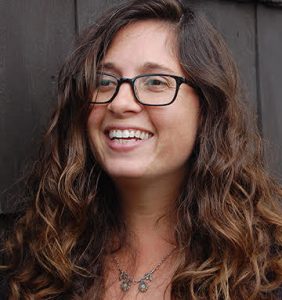
Thanks again to Lauren Sapala for taking time out of her busy life to talk with me. Her books, including the one featured, can be purchased on Amazon. Photo Credits: John Price
Remember to snap a photo when you get your copy so we can add it to our Gallery!
Interview with R.D. Ronald, Transgressive Novelist for All and None
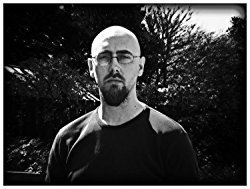 Few things bring me more pleasure than asking fellow authors questions about their life and their writing process. Every once in a while, a fellow author will even respond to my questions.
Few things bring me more pleasure than asking fellow authors questions about their life and their writing process. Every once in a while, a fellow author will even respond to my questions.
Like R.D. Ronald, for instance. If his name seems familiar to you, it’s likely because he’s written two very cool novels within the past decade (one of which—The Elephant Tree—was among the titles featured in the big book giveaway I hosted a few months ago). R.D. writes transgressive fiction—in the same vein as authors like Chuck Palahniuk (Fight Club), Bret Easton Ellis (American Psycho), Irvine Welsh (Trainspotting) and, last and certainly least, me.
Below is my interview with R.D., who’s from England but who may soon be moving to Cyprus in order to dodge British authorities. Thus, to experience the full effect of the interview, it’s absolutely essential you read R.D.’s responses in a thick Newcastle accent while sounding a bit suspicious.
A Brief History of my Gun – Earl Javorsky
 Jennifer was a piece of work. She was my connection’s girlfriend. Jim was the guy that got the ergotamine tartrate from Czechoslovakia, found the chemist in Ann Arbor, and had the tabbing machine in Woodland Hills. Best damn LSD in the ’70s. I would buy it in crystal form—four thousand hits to the gram—and turn it into pyramid-shaped gelatin “windowpanes.” Green for Connecticut. Red for Australia. Blue for LA. We made a lot of money.
Jennifer was a piece of work. She was my connection’s girlfriend. Jim was the guy that got the ergotamine tartrate from Czechoslovakia, found the chemist in Ann Arbor, and had the tabbing machine in Woodland Hills. Best damn LSD in the ’70s. I would buy it in crystal form—four thousand hits to the gram—and turn it into pyramid-shaped gelatin “windowpanes.” Green for Connecticut. Red for Australia. Blue for LA. We made a lot of money.
One night I was supposed to have dinner at their house on the beach in Malibu. I lived nearby, up in one of the canyons. Jim called me and said Jennifer was at the Topanga market, buying food. He said she was running late but come over anyway.
It was late dusk, August, and muggy out. Northbound traffic was still heavy, but I was going the other way. About a mile from the house, I noticed a car in the dirt lane between the northbound lane and the dirt cliff that looms above it. I wasn’t sure, but it looked like Jim’s El Camino. I hadn’t seen it more than a few times—it belonged to his gallery at the MGM Grand in Vegas—but it had a distinctive look with its flatbed and its two-tone paint job. I did a U-turn and doubled back.
The El Camino’s lights were on. There was movement in the cab when I pulled up behind it. Something didn’t check out, but there was no reason Jennifer would be here; the location was past her house if she was coming back from Topanga. I got out of my car.
THE HARDEST PART OF BEING A WRITER? BEING AN ODD-SHAPED PERSON IN A REGULAR SORT OF WORLD
By Lauren Sapala
 I was one of those kids that just never really fit in. It wasn’t any one thing that separated me from the herd, it was more like a collection of things. I wasn’t competitive and I didn’t like sports. The latest trends tended to escape me and I usually gave weird answers whenever anyone asked me a question. I also asked weird questions when it was the other way around. During elementary school and then junior high and finally high school, it was always the same. I had friends. People did like me. But there was always something off, something about me that just didn’t fit.
I was one of those kids that just never really fit in. It wasn’t any one thing that separated me from the herd, it was more like a collection of things. I wasn’t competitive and I didn’t like sports. The latest trends tended to escape me and I usually gave weird answers whenever anyone asked me a question. I also asked weird questions when it was the other way around. During elementary school and then junior high and finally high school, it was always the same. I had friends. People did like me. But there was always something off, something about me that just didn’t fit.
I tried a variety of different strategies to deal with this. I tried being a chameleon and copying what the other kids around me were doing. That didn’t work. I tried swinging all the way to the other end of the spectrum and being totally and extremely weird, and that didn’t work either. So, somewhere around late adolescence/early adulthood I resigned myself to the fact that I was an odd-shaped person in a regular kind of world and I would probably always feel out of place.
But then I discovered that I was a writer.
Writing the Grotesque – Richard Thomas
One of my favorite sub-genres, next to neo-noir and transgressive, is the grotesque. It’s actually quite similar. Let’s talk about what this style of writing is all about, and how it can help you to write better fiction and tap into your veiled weirdness.
DEFINED
In the dictionary, the word grotesque has origins in the Latin root grotto, which means, “hidden place.” Obviously this architectural term has other meanings when it comes to literature, this part of you that you keep a secret—your inner freak. Merriam’s dictionary goes on to define it as distorting “the natural into absurdity, ugliness, or caricature.” It’s also synonymous with monster, bizarre, unexpected, atypical, and unnatural.
